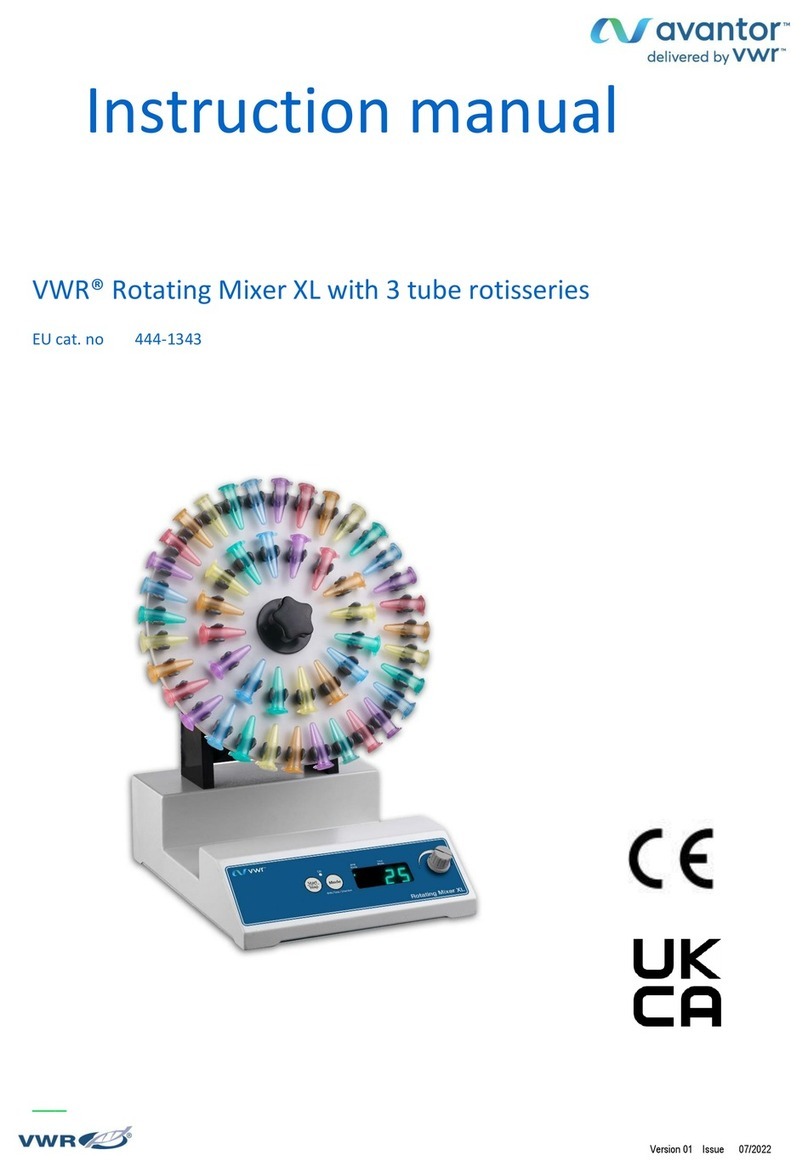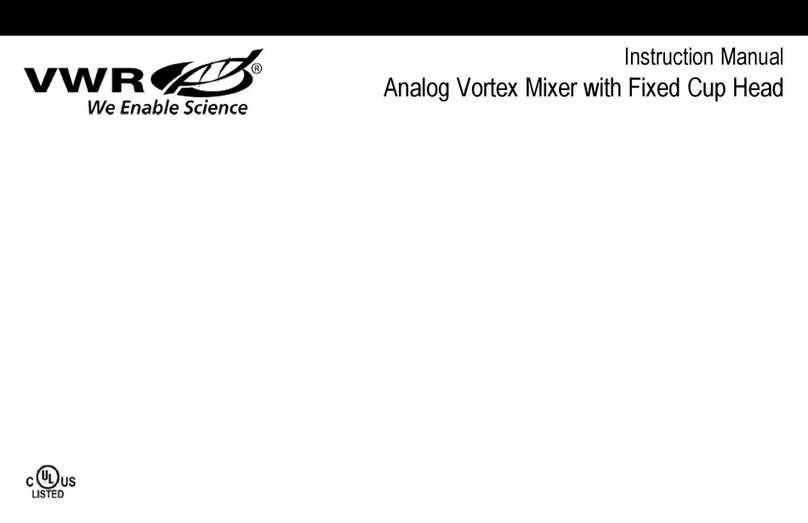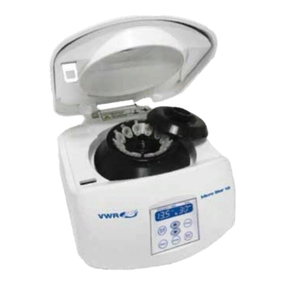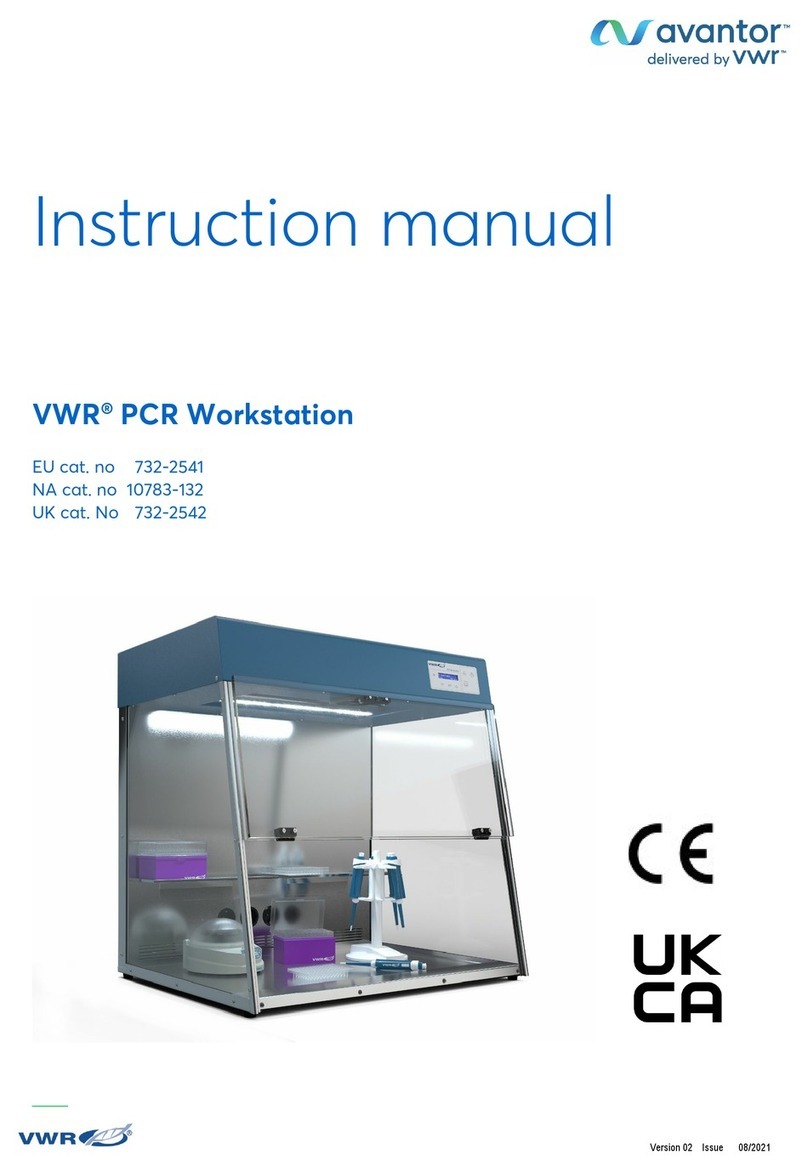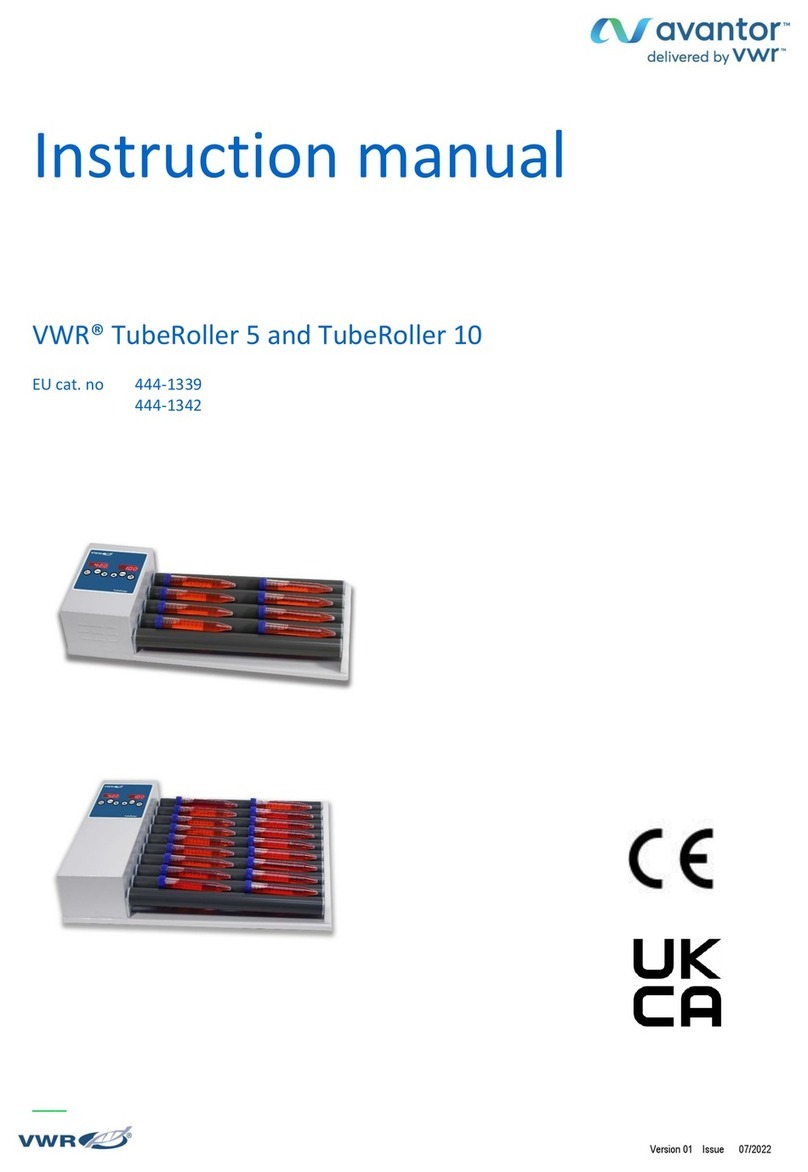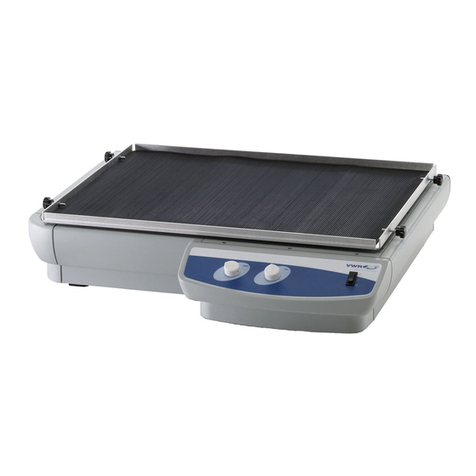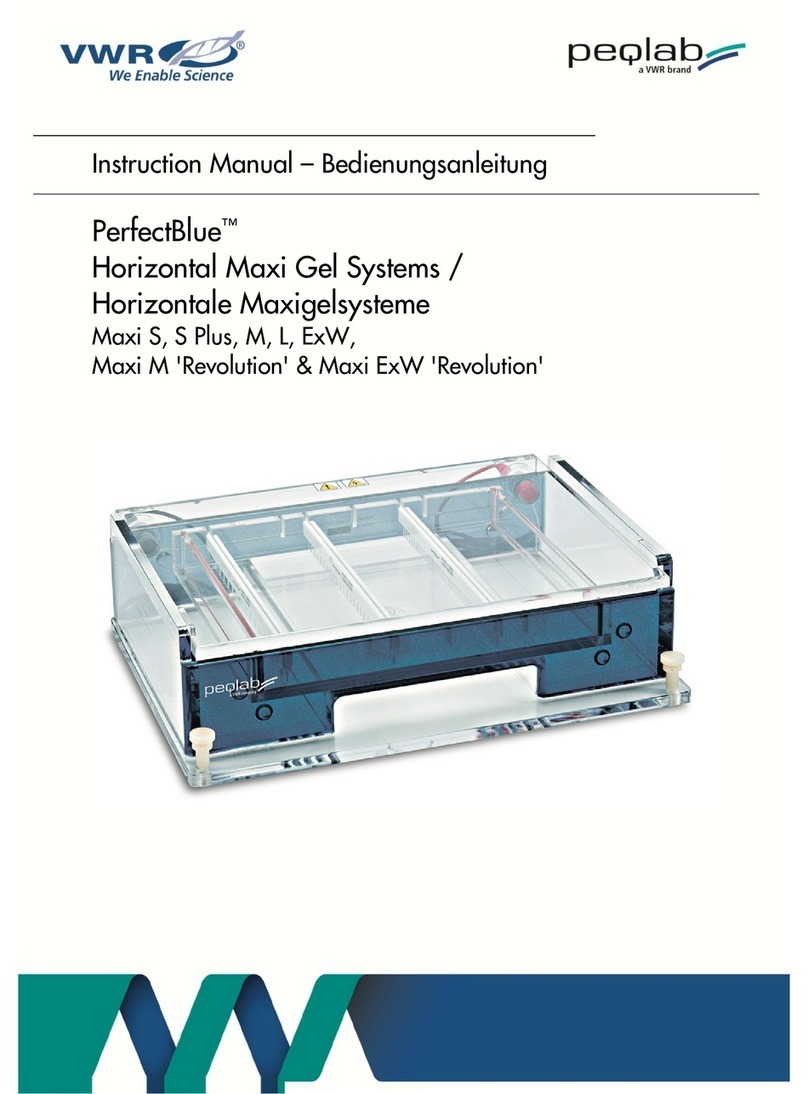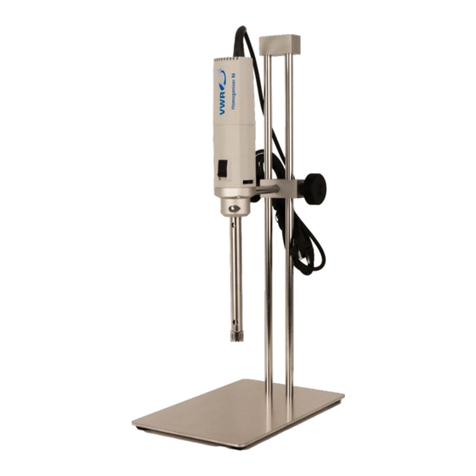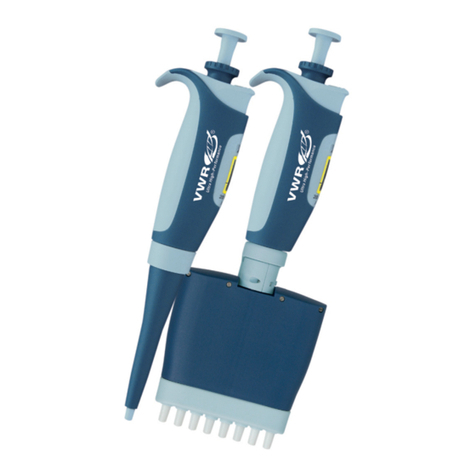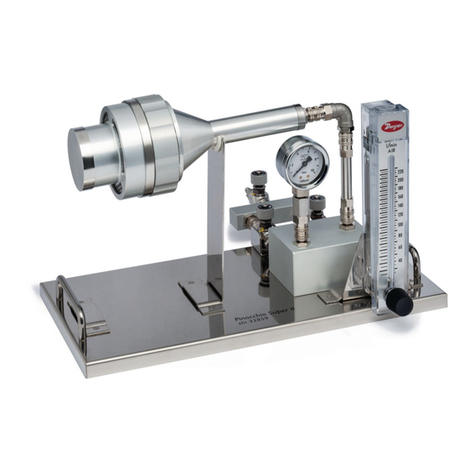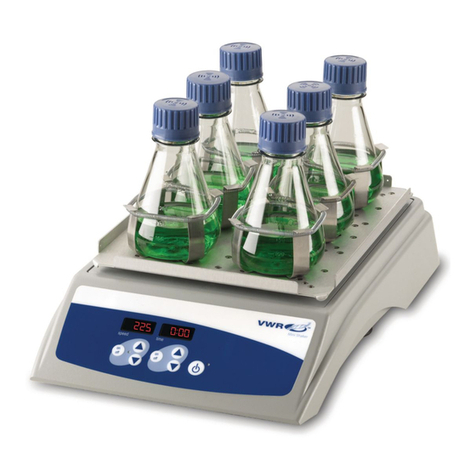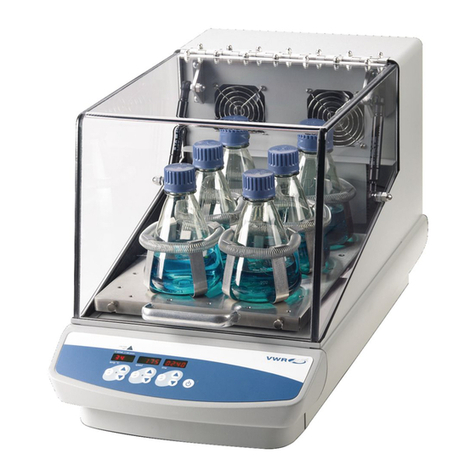
16 – VWR EHP PIPETTORS Instruction Manual – 17
Aspirating High-density Liquids
When pipetting liquids of higher viscosity or lower sur-
face tension than water (e.g., sera or organic solvents),
a film of liquid may be formed on the inside of the
pipet tip which may produce erroneous results. As the
film remains relatively constant in successive pipetting
operations with the same tip, this error can be elimi-
nated by pre-rinsing the tip and allowing a film to form
before transferring the first sample. This is achieved by
aspirating asample and dispensing it back into the
same vessel. Allowing a film to form prior to sampling
ensures optimal accuracy and repeatability.
This pre-rinsing operation should be repeated when
thevolume to be aspirated is changed or when a new
pipet tip is used.
NOTE: Normally the degree of error resulting from
viscous liquids is negligible if pipetting is performed
slowly and carefully, however can be minimized further
by holding the pipet tip in position for at least 2 seconds
after aspiration to allow the liquid time to react to the
change in pressure before it is dispensed.
If the above method does not result in accurate values,
recalibrate the pipettor in accordance with Section 9.
It is recommended to record recalibration and correc-
tion values, in order to facilitate reverse calibration to
astandard liquid.
Filters
The 5,000 μL and 10,000 μL pipettors include a replace-
able filter (L), fitted at the bottom of the shaft which
prevents aspirated liquid from entering the shaft and
contaminating the inner surface and plunger. Use of
the filter is particularly important when aspirating and
dispensing large volumes of liquid. The filter should be
replaced if it becomes wet.
9. Checking Pipetting Accuracy Parameters
and Pipettor Recalibration
The pipettors have been factory-calibrated using
gravimetric methods with manufacturer pipet tips and
distilled water, in accordance with ISO 8655 guidelines
for the maximum (nominal) liquid volume drawn by the
pipettor and for 10% of the maximum or minimum liquid
volume according to the values given (Section 5).
The pipettors are designed to enable recalibration and
adaptation to different pipetting techniques and liquid
properties (e.g., temperature, density, and viscosity).
8. Aspiration and Dispensing Instructions
Aspirating Liquid
1. Press the pushbutton to the first stop point.
Holdingthe pipettor vertically, immerse the pipet tip
into the sample liquid to the recommended depth
(for recommended values see Section 7). Ifthepipet
tip is not immersed to the recommended depth or if
the pipetting pushbutton is rapidly released, air may
enter the pipet tip.
2. Release the pipetting pushbutton slowly and
smoothly to aspirate the sample. Wait one second
and then withdraw the pipet tip from the liquid.
CAUTION: Do not touch the used tip.
Dispensing Liquid
3. Place the end of the pipet tip against the inside wall
of the vessel at an angle of 10° to 40°. Press the push-
button smoothly to the first stop. Wait one second.
4. Press the pushbutton to the second stop to expel
any remaining liquid. While keeping the pushbutton
depressed, remove the pipettor from the vessel by
drawing the pipet tip against the inside surface of
thevessel.
5. Release the pushbutton to its starting position.
6. Eject the pipet tip by pressing the tip ejector
pushbutton.
Remember to change the pipet tip whenever
a different type of liquid is to be sampled.
